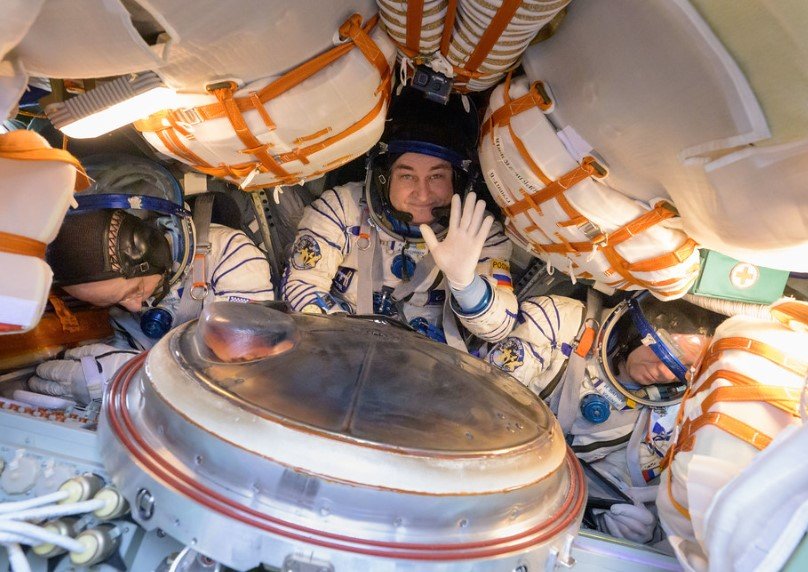NASA astronaut Don Pettit has finally returned to Earth after a remarkable seven-month mission aboard the International Space Station (ISS), during which he not only made groundbreaking strides in scientific research but also celebrated a personal milestone — his 70th birthday. Pettit’s safe return on April 20, 2025, marks the end of an inspiring mission, filled with exploration and important contributions to space science. From conducting experiments in microgravity to capturing breathtaking photographs of the cosmos, Pettit’s time aboard the ISS was as productive as it was historic.
A Journey Across 93 Million Miles and Over 3,500 Orbits
Don Pettit’s mission aboard the ISS was no small feat. Over the course of his seven-month stay, Pettit and his fellow cosmonauts, Alexey Ovchinin and Ivan Vagner, traveled approximately 93 million miles. This is roughly the distance between Earth and the Sun, an astronomical figure that puts into perspective the immense scale of space exploration. Throughout their journey, the team orbited the Earth an astonishing 3,520 times, conducting experiments and gathering data that will contribute to our understanding of space and our ability to live and work beyond our home planet.
The mission, part of NASA’s continued efforts to expand humanity’s presence in space, has had profound implications for future space exploration. The work done by Pettit and his crew aboard the ISS will help inform upcoming missions to the Moon and Mars, providing critical data on the long-term effects of space travel on the human body, as well as advancing technologies that will be necessary for future lunar and Martian endeavors.
The Science Behind the Mission: Advancing Space Exploration
Pettit’s mission was not just about the journey. It was about the science. One of the highlights of the mission was Pettit’s work with 3D printing in microgravity. 3D printing is a technology that has the potential to revolutionize manufacturing, and Pettit’s experiments in space demonstrated its possibilities for future space missions. By printing objects in space, astronauts can avoid the need to bring every single tool or part with them on missions, a significant cost-saving advantage when planning long-duration expeditions like those to the Moon or Mars.

In addition to the technical work, Pettit took on the role of space photographer, capturing stunning images of Earth from orbit. His photographs, including awe-inspiring shots of the aurora borealis and the swirling clouds of our planet, not only helped raise awareness of the beauty of space but also contributed to a better understanding of our planet’s atmospheric processes.
Celebrating a Milestone 70th Birthday in Space
In a personal twist, Pettit’s return to Earth coincided with a significant milestone—his 70th birthday. Celebrating this birthday aboard the ISS was a reminder of not only Pettit’s extraordinary career but also the incredible journey space exploration has undergone. Over the decades, Pettit has been part of an elite group of astronauts who have contributed immeasurably to humanity’s understanding of space.
While many people may celebrate their 70th birthday with family gatherings or quiet moments at home, Pettit celebrated this milestone in a way few could imagine — by completing a successful mission aboard the ISS, having contributed to scientific research that could help lay the foundation for humanity’s future in space. It was a fitting tribute to a life spent exploring the unknown.
A Safe Return to Earth: Landing in Kazakhstan
On April 19, 2025, Pettit’s journey home began as he and his cosmonaut colleagues left the ISS aboard the Soyuz MS-26 spacecraft. The spacecraft began its descent to Earth at 5:57 p.m. EDT, marking the beginning of a thrilling return to their home planet. After traveling through space for several hours, the Soyuz spacecraft made a parachute-assisted landing near the town of Dzhezkazgan in Kazakhstan at 9:20 p.m. EDT.
Upon landing, Pettit and his fellow crew members were quickly greeted by medical teams, who ensured their safe recovery after the long-duration spaceflight. The crew members were then transported to a medical tent for routine post-landing checks.
The Soyuz MS-26 mission was a milestone in itself, as it marked the successful conclusion of another chapter in human space exploration. Pettit’s return serves as a reminder of the dedication and determination required for space missions, and his career has been a testament to the importance of collaboration between countries and space agencies around the world.
Looking Ahead to Future Exploration
Don Pettit’s return to Earth is not just the end of one journey; it’s also the beginning of a new chapter in space exploration. The data collected during his mission will provide invaluable insights for future missions to the Moon, Mars, and beyond. Pettit’s work aboard the ISS will be instrumental in preparing for the challenges astronauts will face on these long-duration missions, including the psychological and physical effects of prolonged space travel, as well as the need for new technologies and systems to support human life on other planets.
NASA continues to build upon the legacy of astronauts like Pettit, whose work in space has paved the way for future generations of explorers. As Pettit himself has said, “The more we explore, the more we learn. Every mission is a stepping stone to the next one.” With plans for missions to the Moon and Mars already in motion, the future of space exploration looks bright, and Pettit’s contributions will remain an integral part of this ongoing story.
